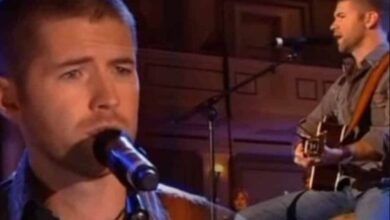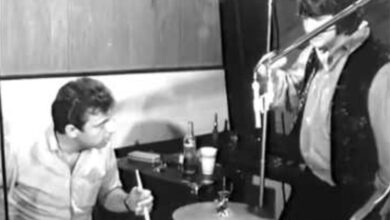Captain Kangaroo: A Gentle Giant of 1960s Television and Childhood Memories
The television landscape of the 1960s was graced by a warm, gentle presence that came to embody the magic of classic children’s programming: Captain Kangaroo. Hosted by the affable Bob Keeshan, Captain Kangaroo was more than just a show—it was a comforting ritual for countless children, a morning tradition that provided a soothing start to their day. Airing from 1955 until the early 1980s, this program captured the hearts and minds of young viewers for over three decades, becoming a cherished memory for many who grew up during this golden age of television.
Bob Keeshan, who portrayed the captain, created an environment that was both entertaining and educational. Unlike the frenetic pace of some children’s shows, Captain Kangaroo took its time, encouraging kids to slow down and enjoy the simple, delightful stories, conversations, and gentle humor that were presented each day. There was an endearing calmness to the show, embodied in Keeshan’s soothing voice and friendly demeanor, making children feel like they were sitting in a comfortable room with a trusted friend. The Captain’s trademark large pockets, filled with treasures, were a source of wonder and joy, symbolizing endless possibilities for storytelling and learning.
One of the most beloved aspects of Captain Kangaroo was its colorful ensemble of characters. Mr. Green Jeans, played by Hugh “Lumpy” Brannum, was a warm-hearted farmer who would often share fascinating stories about animals and nature, capturing the imagination of young minds. Then there was the playful and mischievous puppets, like Bunny Rabbit and Mr. Moose, who would frequently set up humorous gags and puns that resulted in gentle laughter—often at the expense of the Captain himself. The warm rapport between Keeshan and these characters provided a rich sense of community, teaching children about friendship, kindness, and respect in a way that was seamlessly woven into the show’s fabric.
The show’s theme music also played an iconic role. Its light, whimsical melody was something that children could instantly recognize, and it often brought a wave of nostalgia to those who grew up watching the show. For many, hearing that tune would transport them back to simpler times, to mornings spent in front of the TV, wide-eyed and captivated by the Captain and his friends. The music set the tone for a gentle world where creativity and exploration were encouraged, offering solace in a world that, at times, felt too big or too complex for little minds.
What set Captain Kangaroo apart was its dedication to fostering a sense of warmth and inclusivity. Bob Keeshan envisioned the show as a safe, welcoming space where children could feel seen and heard, and he was careful to craft content that would gently guide young viewers through important life lessons. There was no rush to deliver punchlines or quick jokes; instead, Keeshan allowed moments to breathe, offering a peaceful rhythm to storytelling and conversation that is rarely seen in modern children’s television.
The impact of Captain Kangaroo extended beyond the screen. Keeshan was a pioneer in children’s programming, believing deeply in the responsibility of media to nurture and support the development of young minds. He was a strong advocate for educational programming and spoke passionately about the need for quality content that respects children’s intelligence and emotional needs. To this day, Captain Kangaroo is remembered as a model of thoughtful, caring television, setting a standard for the way children’s programming could positively shape the values and understanding of its audience.
For many adults who fondly recall their childhood mornings with the Captain, the show remains a cherished memory, a time capsule of innocence and joy. Whether they were laughing at Mr. Moose’s pranks, listening to Mr. Green Jeans’ stories, or feeling a sense of calm as the Captain spoke to them directly, the show offered a reassuring hand to hold. It was, and still is, a testament to the power of kindness, imagination, and the belief that every child deserves a world filled with love and wonder.
The legacy of Captain Kangaroo is one of connection, gentleness, and the simple, abiding belief in the goodness of childhood. It stands as a reminder that television has the power to do more than just entertain; it can nurture, uplift, and leave an indelible mark on the hearts of those who grow up with it. And even decades later, as the theme music plays, one can almost hear the Captain’s soft voice welcoming them back into the Treasure House, inviting them to share in the timeless joy of being a child.





